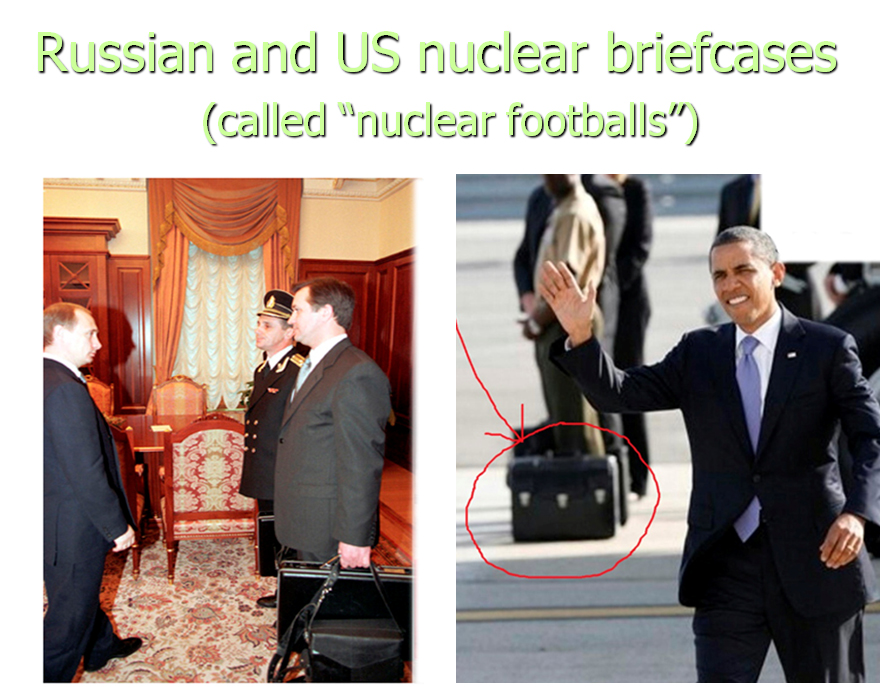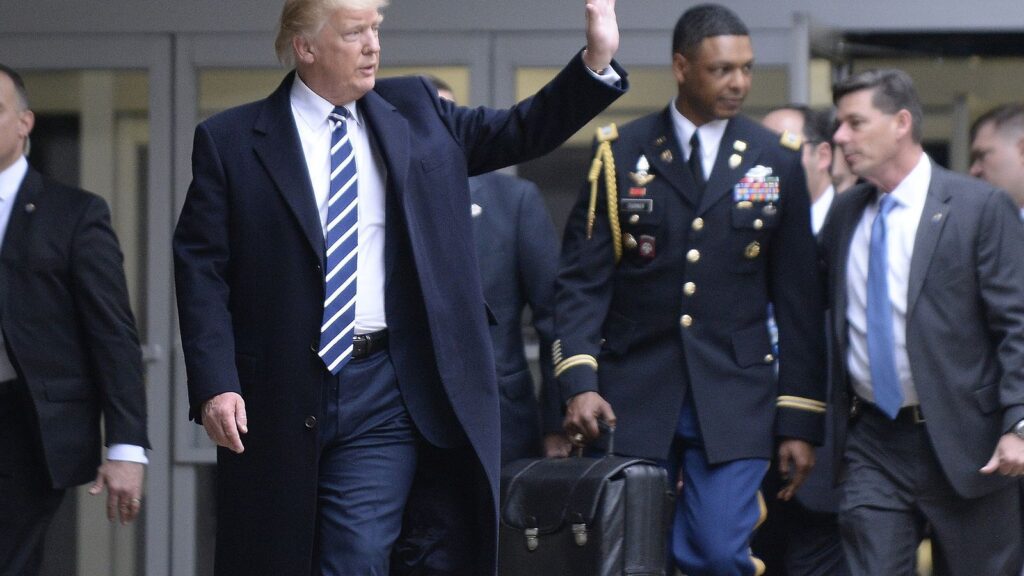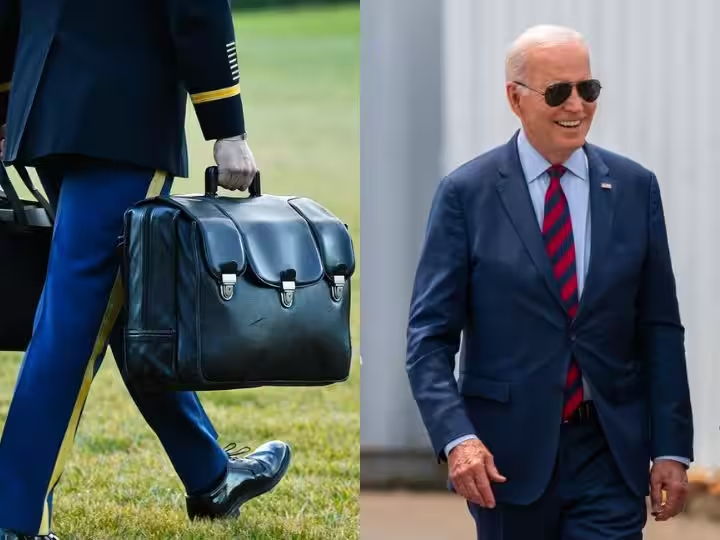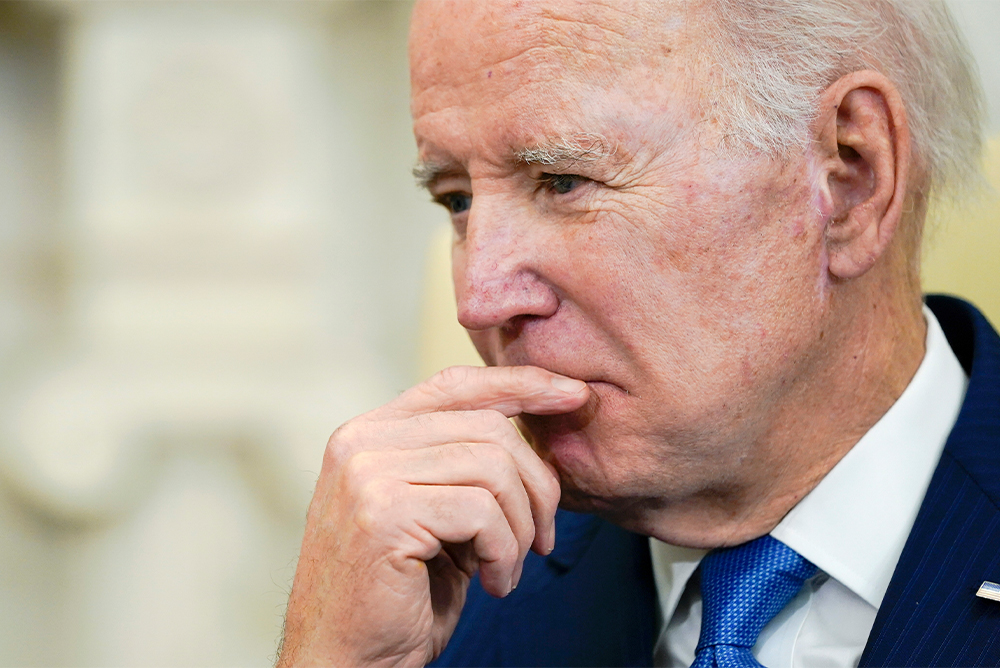US and Russian Presidents are constantly accompanied by a military officer carrying “the nuclear briefcase” (nicknamed the “football”), which contains something that resembles a laptop computer that allows the President to give the permission order to launch a nuclear strike (in Russia, the suitcase is called cheget).
The permission order to launch can be transmitted in less than one minute, and it only requires a few minutes for the Minuteman intercontinental missiles (ICBMs) to then be launched (hence the name “Minutemen”). Today the US has 400 Minuteman III ICBMs in Montana and North Dakota. They are all kept at launch-ready status. Their design requires that they remain powered up and ready to launch 24/7.
Minutemen III missiles are capable of launching multiple warheads (up to 3 warheads), which can each be independently targeted. The term used to describe this is MIRV – Multiple Independently-targeted Re-entry Vehicles.
The Submarine Launched Ballistic Missiles (SLBMs) carried by Trident subs are also MIRVd; they can carry 8 warheads but under the New START agreement, most of the Trident missiles have had a number of these warheads “downloaded”, or removed, so that they typically carry 3 or 4 warheads each.
The Trident subs are always moving in and out of areas where they can launch their weapons to hit the designated targets. At least 4 Tridents are typically kept at “hard alert”, that is, in an area where they can receive the launch order and launch within 15 minutes.



